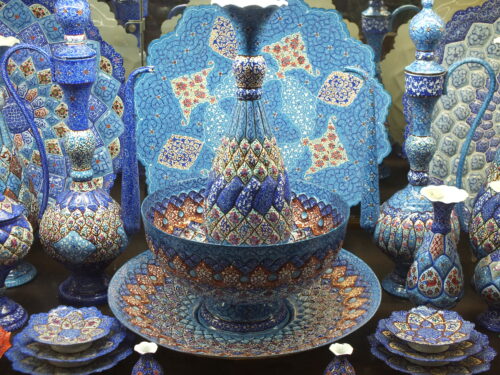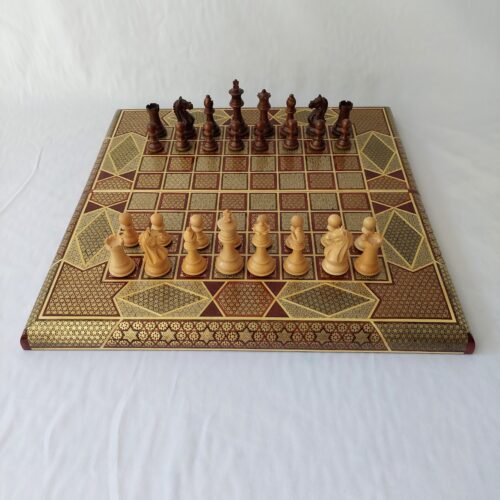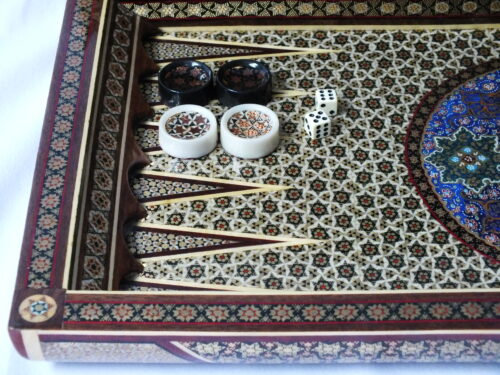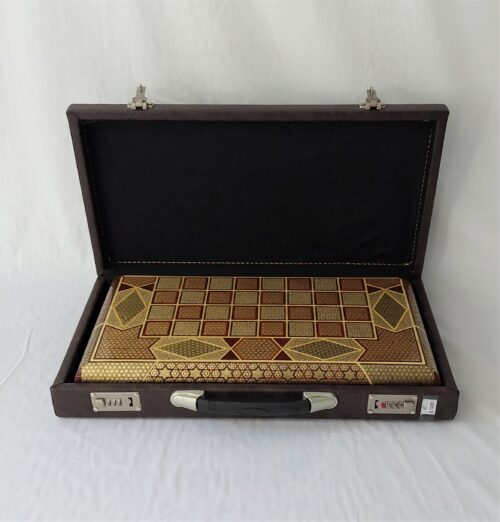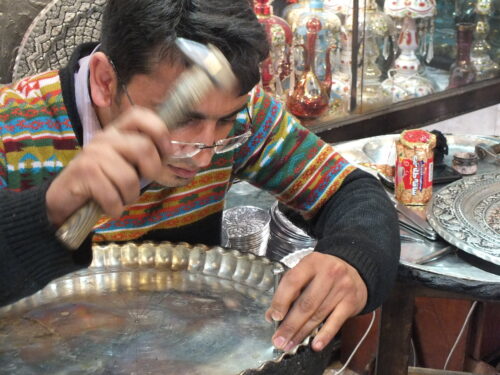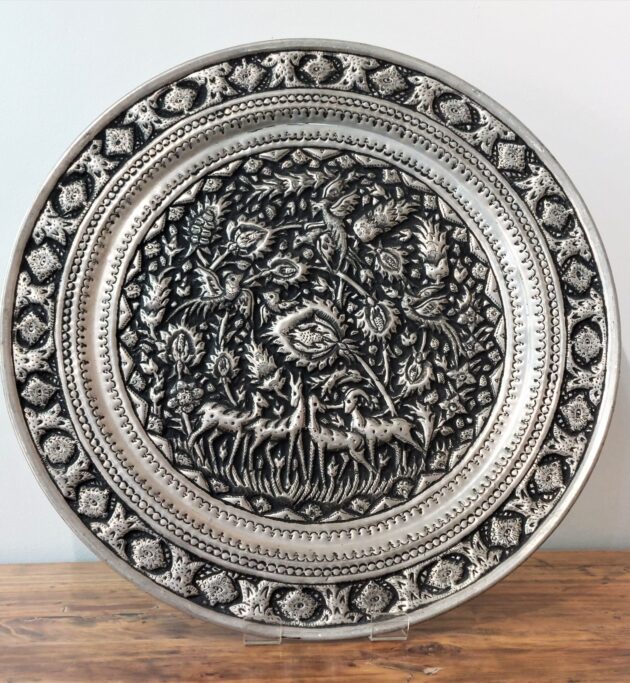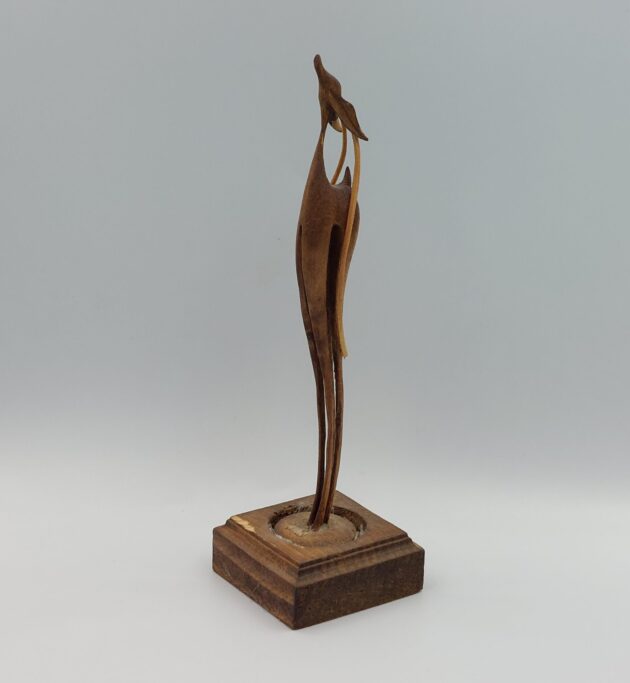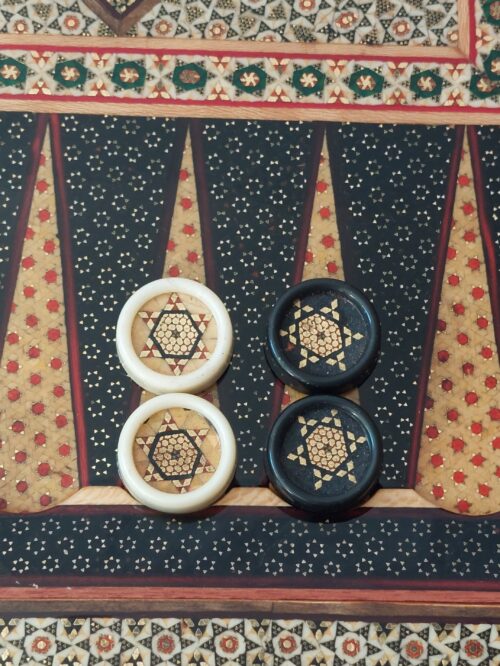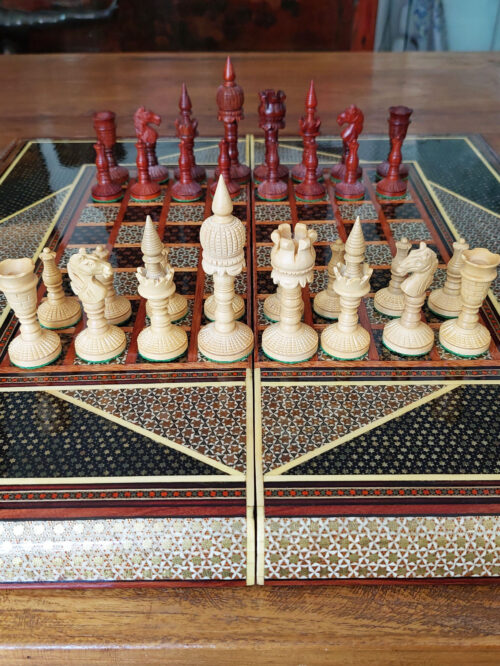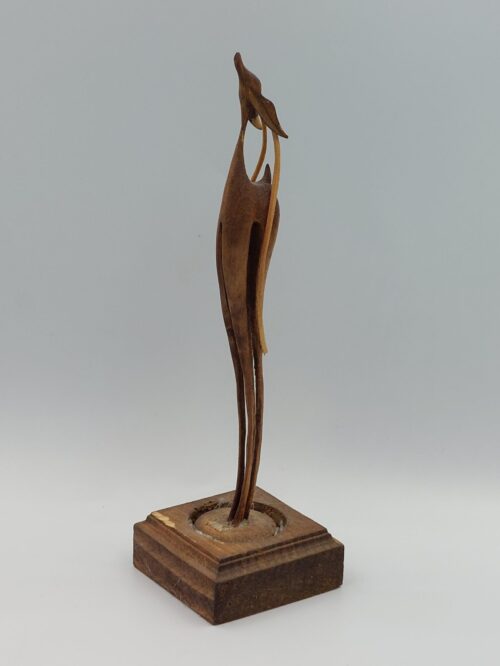Logistics
As with all our trips, before arriving in Iran, we investigated the practicalities ie customs (out of Iran and into UK), shipping and logistics as well as researched as widely as possible, the likely crafts, arts and materials that we might find and where.to look.
It’s disheartening how sanctions really work and who is most affected. If you’re big enough (oil companies, French & German carmakers and pretty much any business in Asia are examples) then the sanctions are porous – we’ve never seen so many Peugeots or Citroens in one place before. But try organising small-scale shipping or air freight!
We found one DHL office listed in Tehran but the phone number redirected to an office somewhere in the UK whose occupant didn’t know there was an office in Tehran and thought THAT was in Iraq.
So we would need to hand-carry anything we found – a bit limiting.
One traditional possibility was carpets…. now we always buy directly from the makers but I’m afraid that the days of home-woven artisan weavers has passed or perhaps is so organised that we didn’t get close – and we’re quite good at this!
One mid-sized carpet we fell for – silk/wool, medium knot density – could not be negotiated down further than $16,000 !!
We did find, by accident, the wholesale dealing rooms in Tabriz (boy, did we stand out). Here the carpets being traded had not yet been edge-bound but were straight off the looms. But still a fortune!
We didn’t bring home any carpets.
What we did manage to find were several people making khatam and metalwork in Esfahan (and, again in Tehran). Despite the tourist-oriented “front-end” in Esfahan, there still exist the artisan back-streets and alleys where the crafts are actually made although, understandably, most tourists don’t find them and wouldn’t go there anyway.
Khatam is an ancient marquetry technique using fine rods of brass, silver, strips of various woods and bone, bonded together into a sort-of-Blackpool rock-bundle each with a different, intricate design running through. Wafer-thin slices are then cut off the bundles and these are bonded onto a wooden or ceramic base – usually boxes, tiny vases or other small items. The effect is beautiful and rather exotic.
We had seen examples of this craft before as John’s sister-in-law is Iranian and the tiny intricately decorated khatam boxes are a valued gift.
So, as we were logistically limited we decided to bring back a very few, but incomparable items. Iran can claim to have invented the modern game of chess based loosely on similar games brought along the silk road from China.
So, after tracking down two of the better khatam artisans, one in Esfahan, one Tehran, both making quite exquisite individual pieces we couldn’t resist buying five of their finest chess and backgammon boards. They were utterly gorgeous.
Happily each board came in its own case.
Unhappily each weighed up to 8kgs!
Happily we only had to carry them around Iran and to Istanbul before sending them home.
(Unhappily DHL “lost” them somewhere in the UK for nearly 5 weeks.)
And most unhappily of all, we have no pictures of the maker – he absolutely did NOT want his picture taken.
Postscript :- over the next year we sold all but one of the khatam boards and constantly emailed the makers in Iran to keep contact and to try and receive more pieces but the logistics issue was insurmountable. Then, about 2 years later one of the makers informed us that he was making a trip to Istanbul to deliver some khatam boxes to a customer there “could we manage to meet him there?” Well, YES!!
So we bought a couple of cheap flights,; combined the visit with commissioning some jewellery designs from our favourite Istanbul jeweller; and met up with our Iranian friend in a little café in Kadikoy on the Asian side of the Bosphorus.
He passed over four more chess boards (each in its gun-case-like briefcase) and we passed over an envelope filled with US$’s. The other customers watched curiously. as a Brit, Russian and Iranian transacted a furtive business deal in a Turkish café!
But then, I suspect that sort of thing happens frequently in Istanbul!
We also sourced some exquisite (but heavy) copper platters from the gentleman who hand-embossed them – who was quite happy to be photographed.
Between Karanagh and Esfahan, on the edge of the desert we had stumbled on a shack selling tea (of course) wherein the elderly lady supplemented her living by carving desert scrub wood into gorgeous figures – we had to buy four although transporting these delicate, fragile pieces was a nightmare.
Other things we didn’t buy were stunning pottery, ridiculously finely-painted copper plates and vases, beautiful furniture and particularly chests and a million other things. When those sanctions really do lift (?) we’ll be back.
We could have filled a container with the glorious arts and crafts being made, just as they had for centuries, all across Iran.
A country filled with history, culture and wonderful people.
Now, if their government could just be a little more amenable….
we’ll be back !



